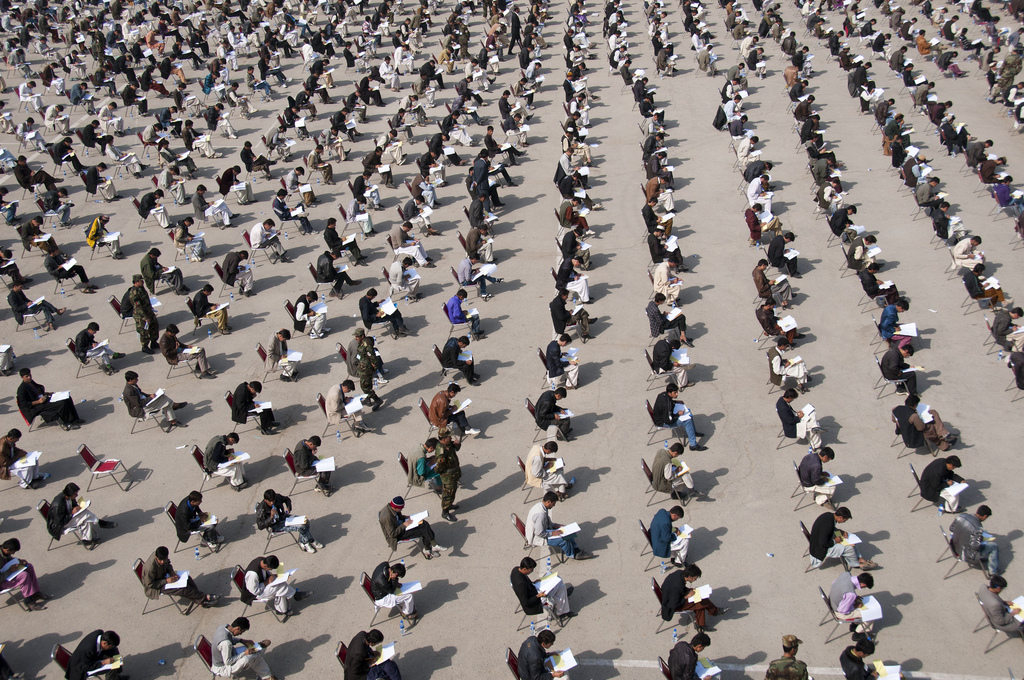
Kabul - More than 4,560 candidates take a test to compete for 600 available National Military Academy of Afghanistan slots in the class of 2015 at the academy in Kabul Nov. 4, 2010. The academy issued invitations to the top three percent of recent high school graduates to attend a three-day selection process which consists of a physical fitness and written exam. (U.S. Air Force photo by Staff Sgt. Sarah Brown/RELEASED)
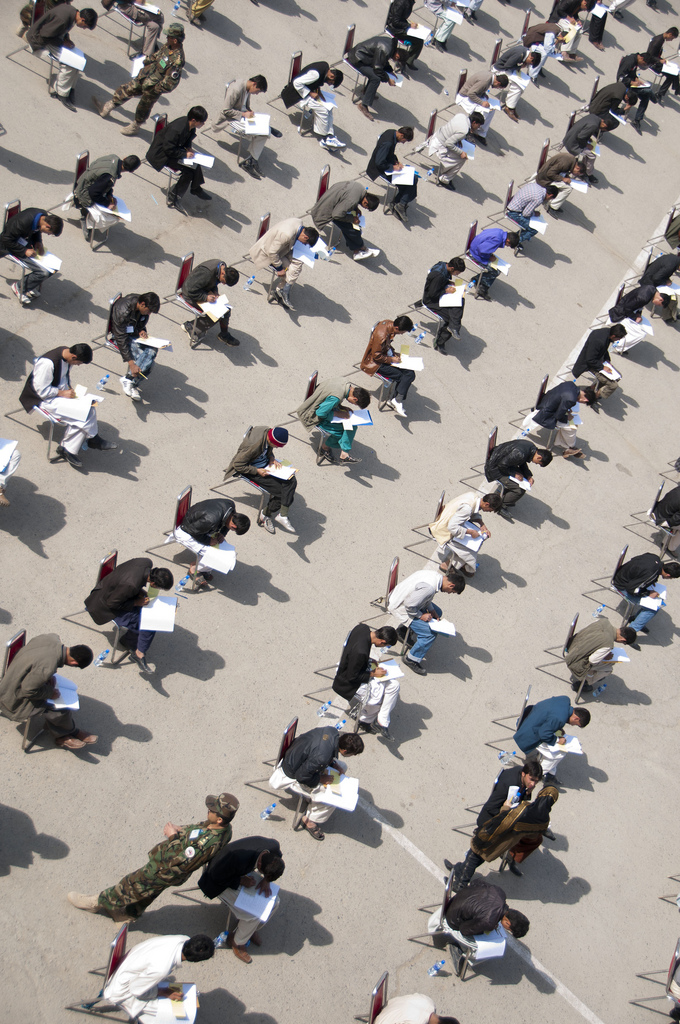
Kabul - More than 4,560 candidates take a test to compete for 600 available National Military Academy of Afghanistan slots in the class of 2015 at the academy in Kabul Nov. 4, 2010. The academy issued invitations to the top three percent of recent high school graduates to attend a three-day selection process which consists of a physical fitness and written exam. (U.S. Air Force photo by Staff Sgt. Sarah Brown/RELEASED)
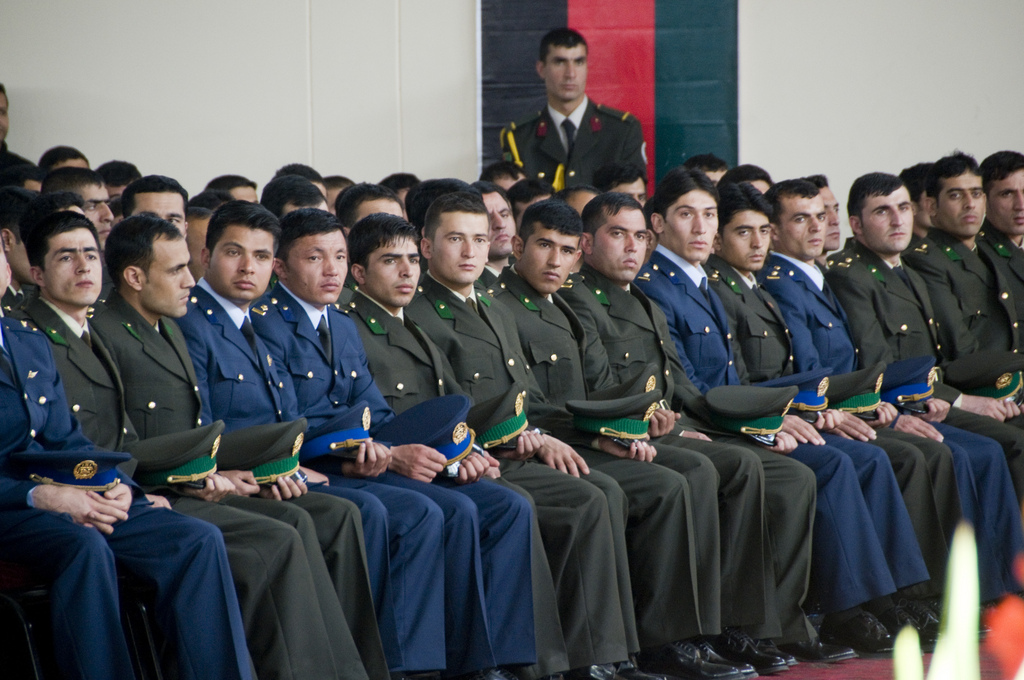
Kabul - The National Military Academy of Afghanistan class of 2010 listens as Afghan President Hamid Karzai gives a speech during their graduation ceremony March 18, 2010. Only the second class to graduate from the academy, which is modeled after the United States Military Academy at West Point, these 212 new officers will join the Afghan National Army as lieutenants. (U.S. Air Force photo by Staff Sgt. Sarah Brown/RELEASED)
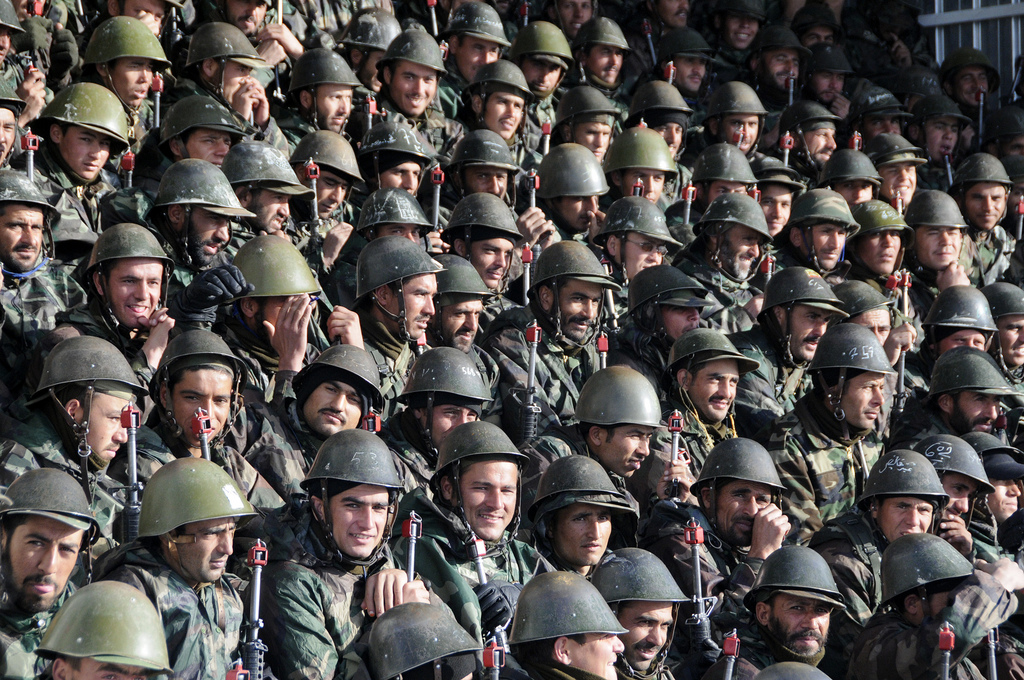
Kabul - The National Military Academy of Afghanistan class of 2010 listens as Afghan President Hamid Karzai gives a speech during their graduation ceremony March 18, 2010. Only the second class to graduate from the academy, which is modeled after the United States Military Academy at West Point, these 212 new officers will join the Afghan National Army as lieutenants. (U.S. Air Force photo by Staff Sgt. Sarah Brown/RELEASED)
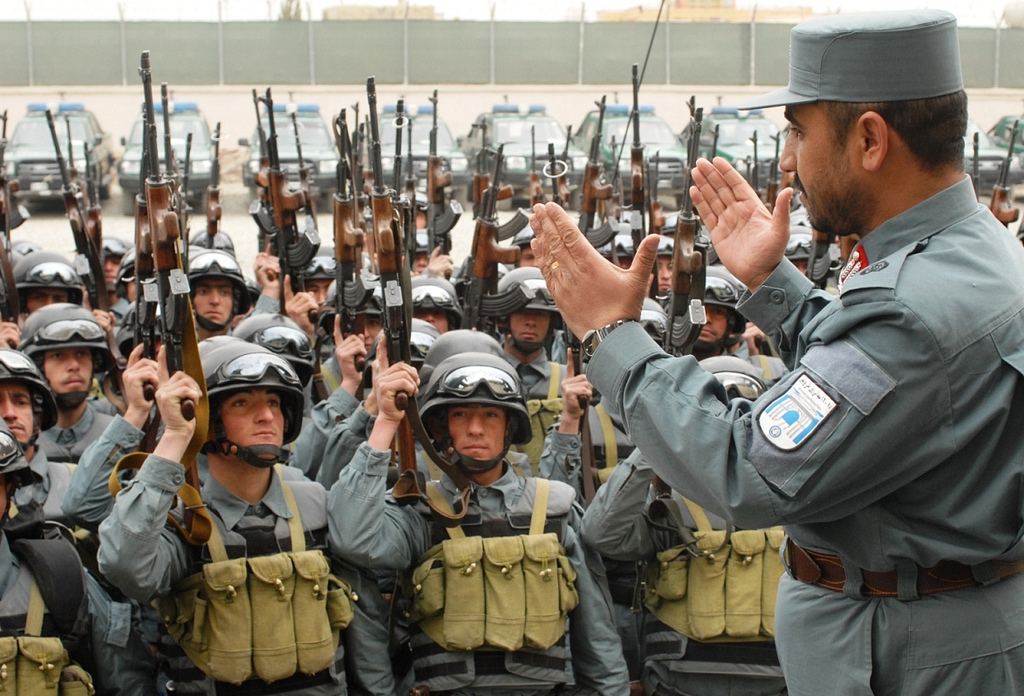
Brig. Gen. Ahmed Fahim Qayem, Central Unit commander, inspires his men Dec. 30. (Photo by Petty Officer 2nd Class John R. Fischer)
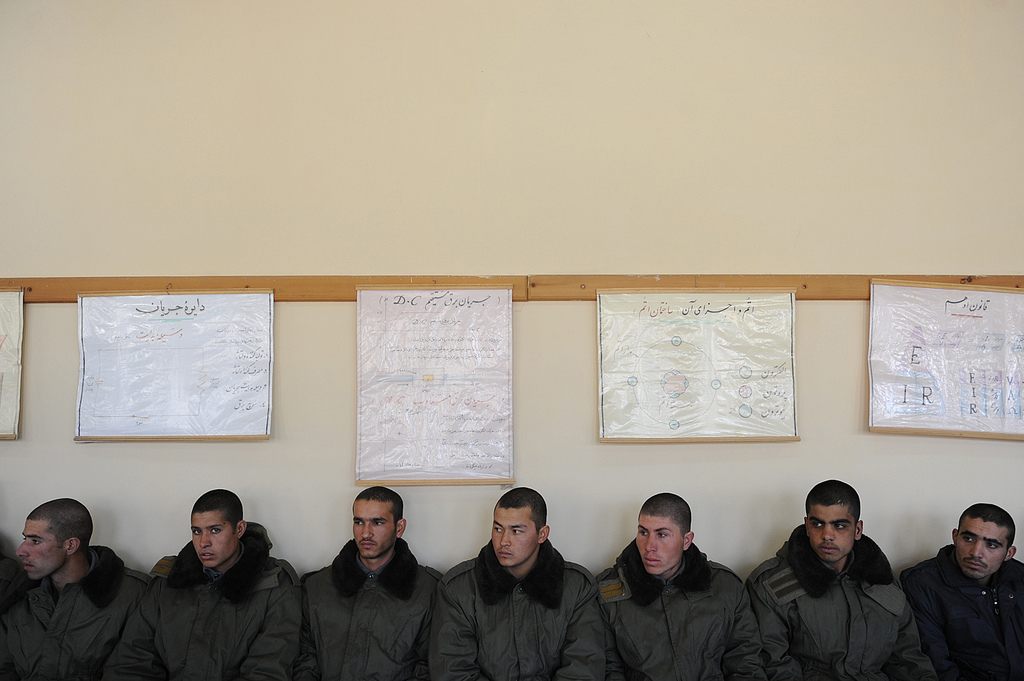
100117-F-7367Y-033 KABUL-Cadets receive instruction on how to utilize communication equipment at the Afghan National Police Academy (ANPA). The ANPA has recently started to train cadets in an accelerated, six-month course due to high demand for more law enforcement officers throughout Afghanistan. The Academy trains men and women from more than 34 provinces. (U.S. Air Force photo by Senior Airman Brian Ybarbo)
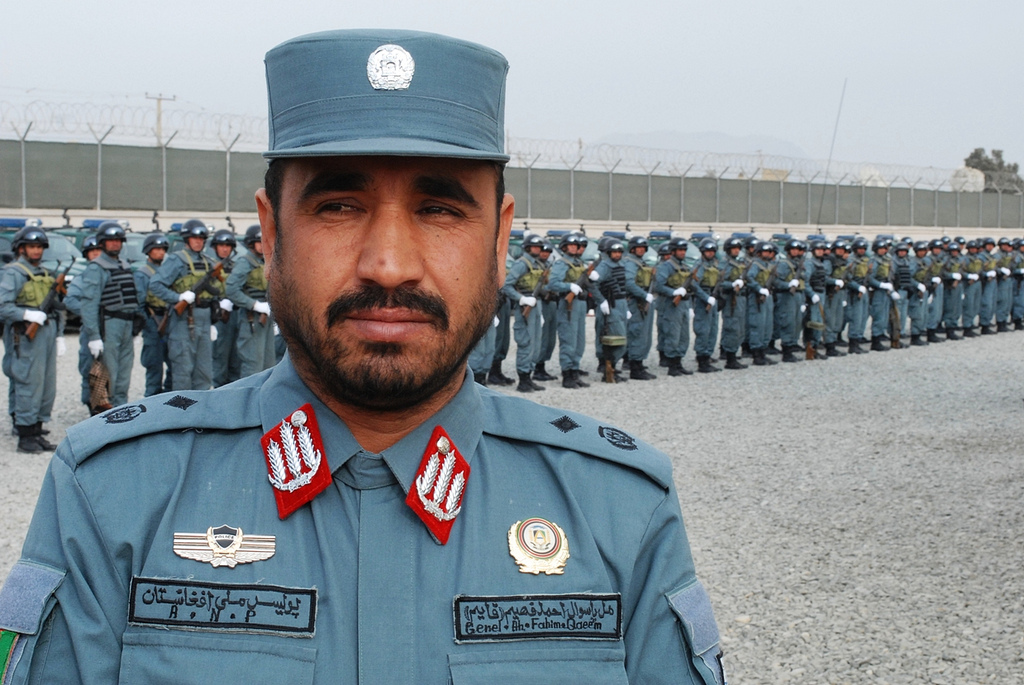
100117-F-7367Y-033 KABUL-Cadets receive instruction on how to utilize communication equipment at the Afghan National Police Academy (ANPA). The ANPA has recently started to train cadets in an accelerated, six-month course due to high demand for more law enforcement officers throughout Afghanistan. The Academy trains men and women from more than 34 provinces. (U.S. Air Force photo by Senior Airman Brian Ybarbo)
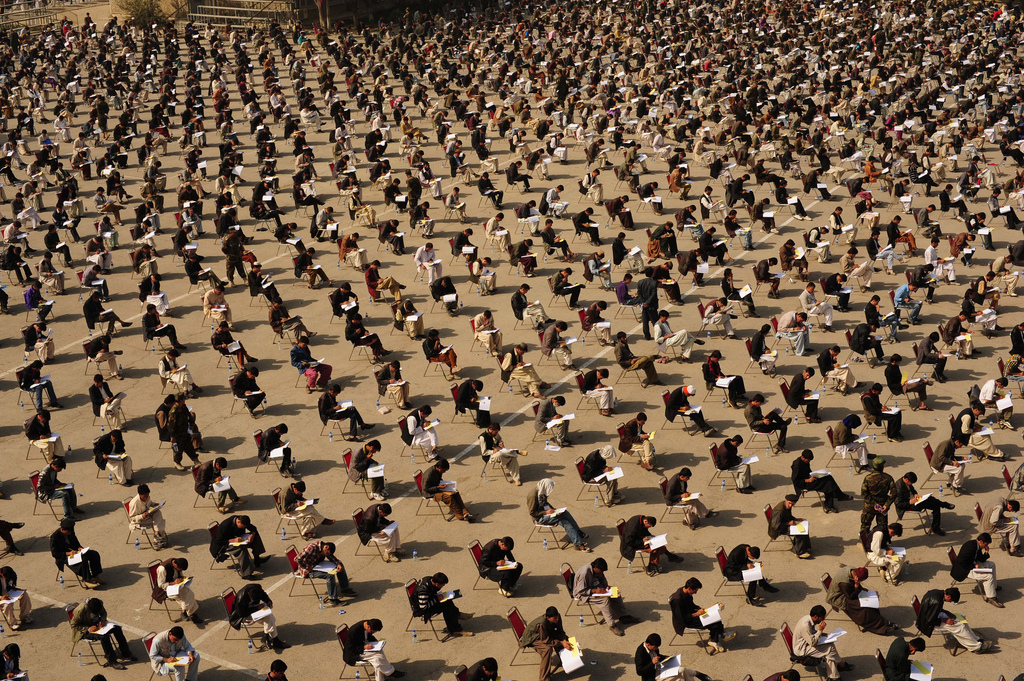
KABUL, Afghanistan - Afghan high school students and proctors participate in the National Military Academy of Afghanistan admissions Process for Class of 2015. 4,568 young Afghans applied for 600 positions as well as 10-15 medical slots. The NMAA is a four-year bachelor degree-producing program that will commission new lieutenants annually. Photo by: MC3(AW) Michael James
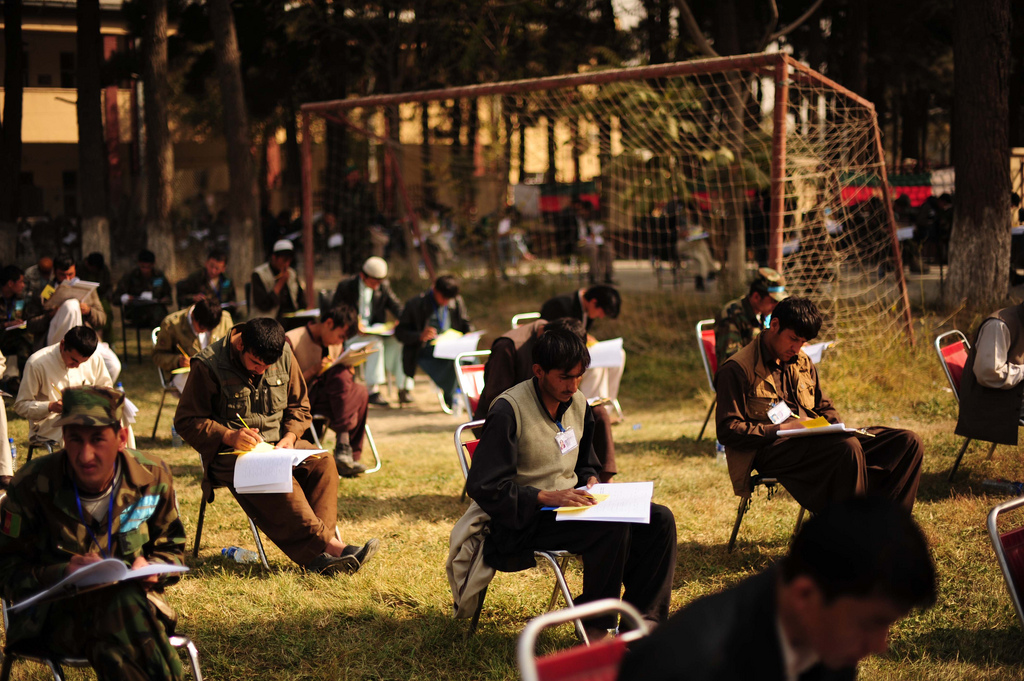
KABUL, Afghanistan - Afghan high school students and proctors participate in the National Military Academy of Afghanistan admissions Process for Class of 2015. 4,568 young Afghans applied for 600 positions as well as 10-15 medical slots. The NMAA is a four-year bachelor degree-producing program that will commission new lieutenants annually. Photo by: MC3(AW) Michael James
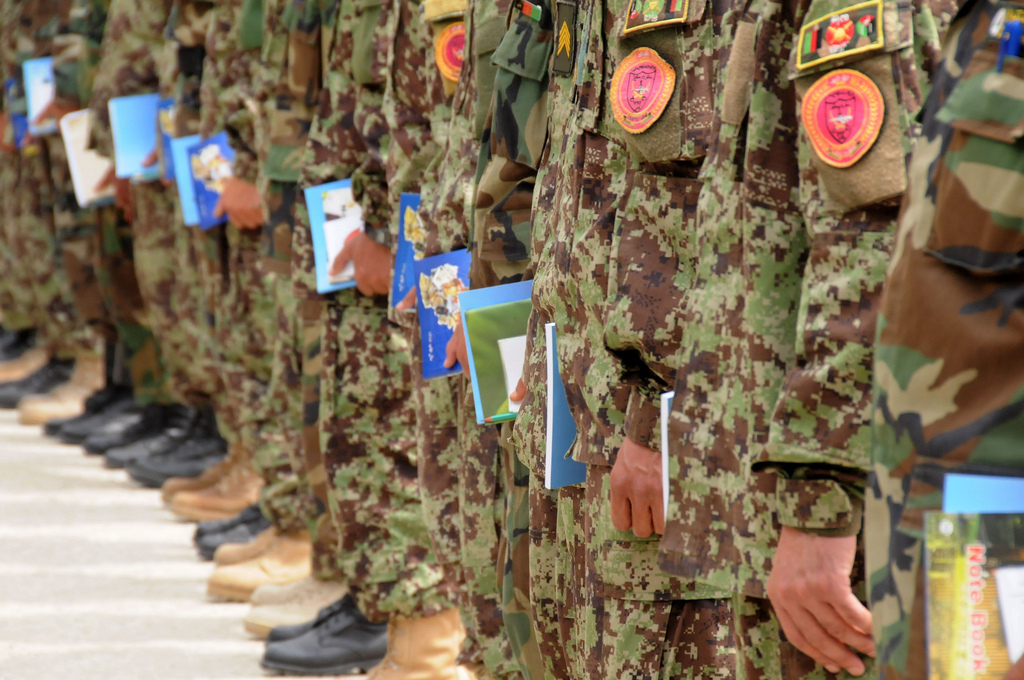
KABUL, Afghanistan -- Afghan National Army soldiers line up with their literacy instruction materials in hand Aug. 7, 2010, at the Capital Division Headquarters. Approximately 14 percent of new Afghan recruits are able to read and write at a third-grade level. (Photo by Staff Sgt. Rachel Martinez, USAF)
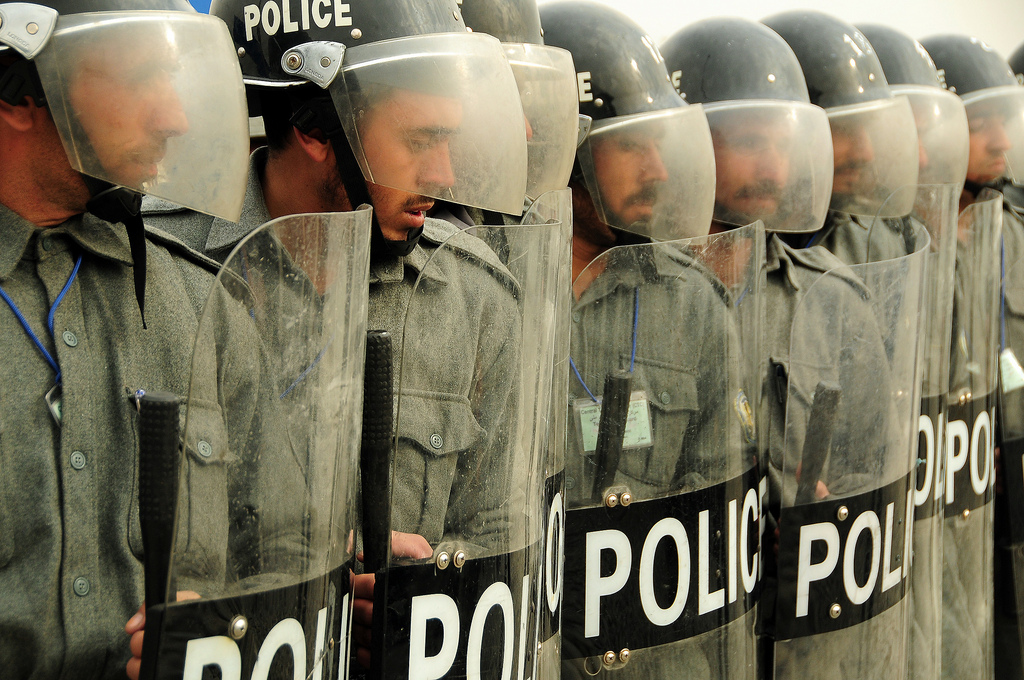
Kabul - Afghan National Police (ANP) trainees prepare for a riot control exercise at the Central Training Center. During the eight-week course, the trainees learn police-specifics such as penal and traffic codes, use of force and improvised explosive device detection. The course also covers the Afghan constitution, human rights and two weeks on weapons and tactical training. (U.S. Air Force photo by Staff Sgt. Sarah Brown/RELEASED)
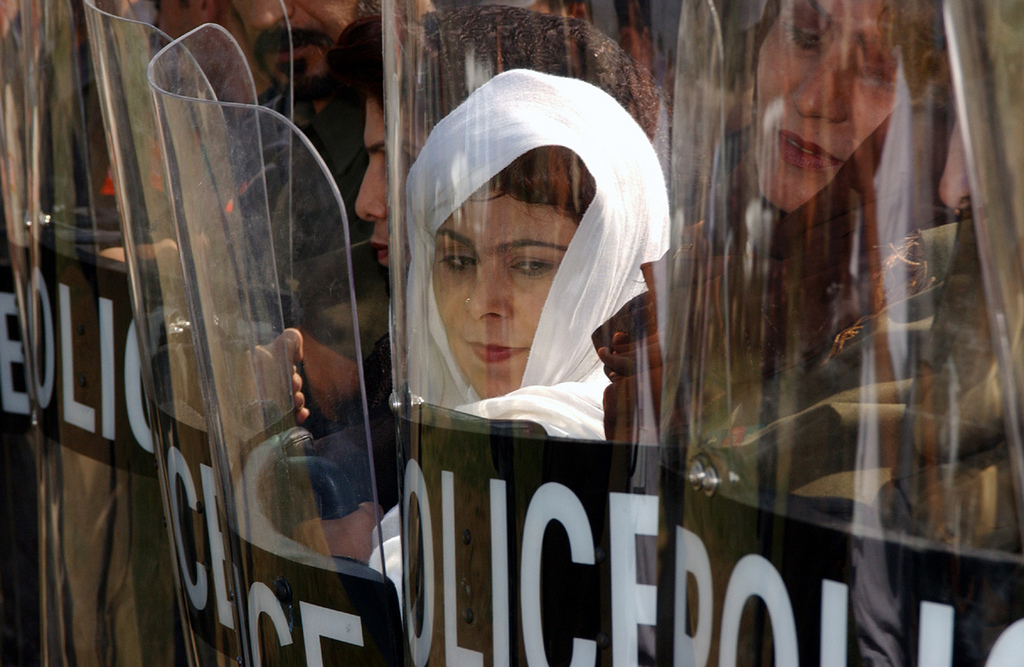
KABUL, Afghanistan - Female Afghan National Police officers, working hand-in-hand with their male counterparts, learn the finer points on how to use non-lethal force to quell civil disturbances during riot training conducted by U.S. forces. With the first-ever presidential elections just hours away, they women say they are glad to be doing their part to help Afghanistan on the road to democracy. (Photo by Sgt. 1st Class Darren D. Heusel, 105th Mobile Public Affairs Detachment)
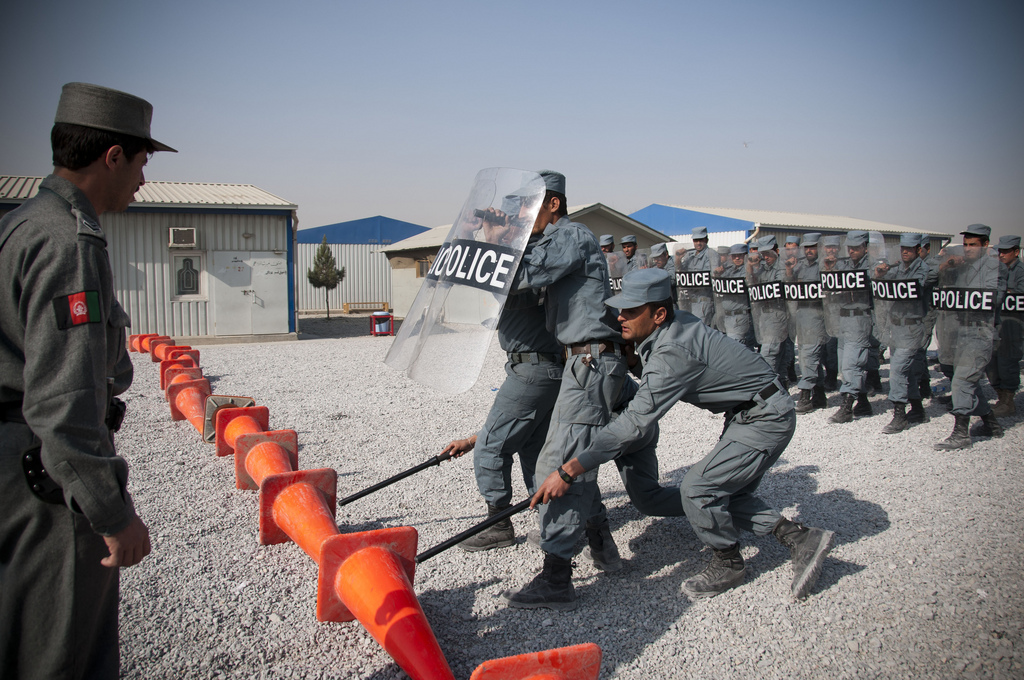
An Afghan instructor looks on as a class of Afghan National Civil Order Police recruits run through a riot control training exercise during their 16-week training course at the Central Training Center, Kabul, Nov. 28, 2010. ANCOP is a specialized branch of the Afghan National Police, designed to provide contingency support in urban and metropolitan areas, typically to Kandahar and Helmand provinces. Recruits must attend a four week literacy program before entering the main course which covers improvised explosive device recognition and reaction, weapons training, ambush reaction techniques, use of force, riot and crowd control and values and ethics. (U.S. Air Force photo by Staff Sgt. Sarah Brown/Released)
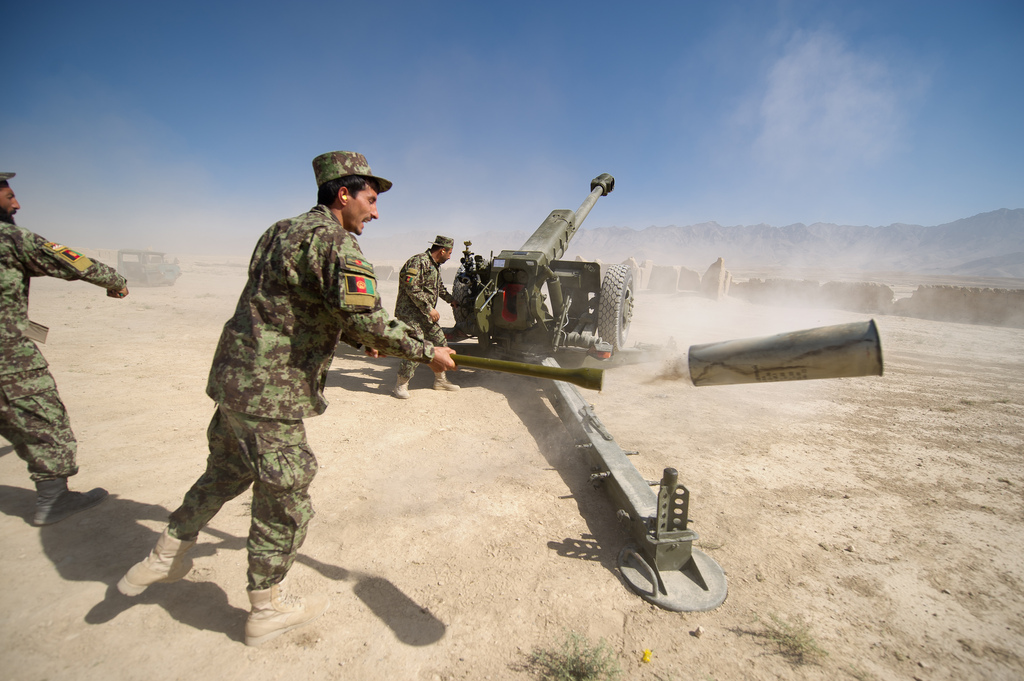
Afghan National Army (ANA) field artillery soldiers conduct a live fire. Australian Department of Defence, Photo by Sergent Neil Ruskin. Approved for Release by: SMPAO Major Jason Logue
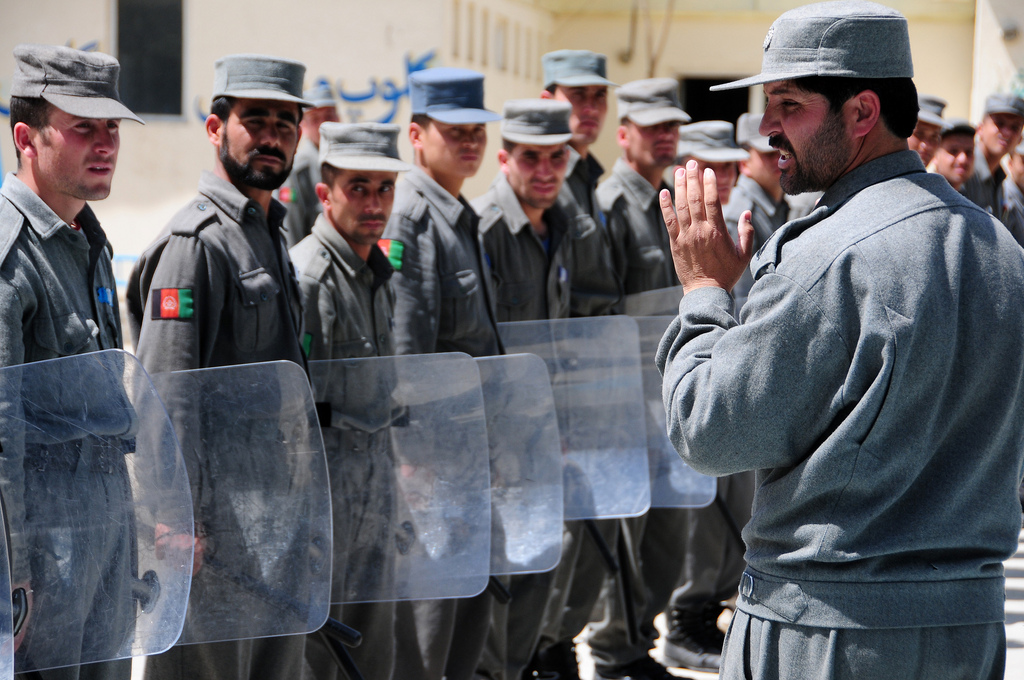
An Afghan instructor goes over riot control techniques with a class of Afghan National Police officers at the ANP academy in Kabul April 19, 2010. Traditional ANPA training is three years, but the academy has recently created an accelerated, six-month course due to high demand for more law enforcement officers throughout Afghanistan. The academy trains men and women from more than 34 provinces. (U.S. Air Force photo by Staff Sgt. Sarah Brown/RELEASED)
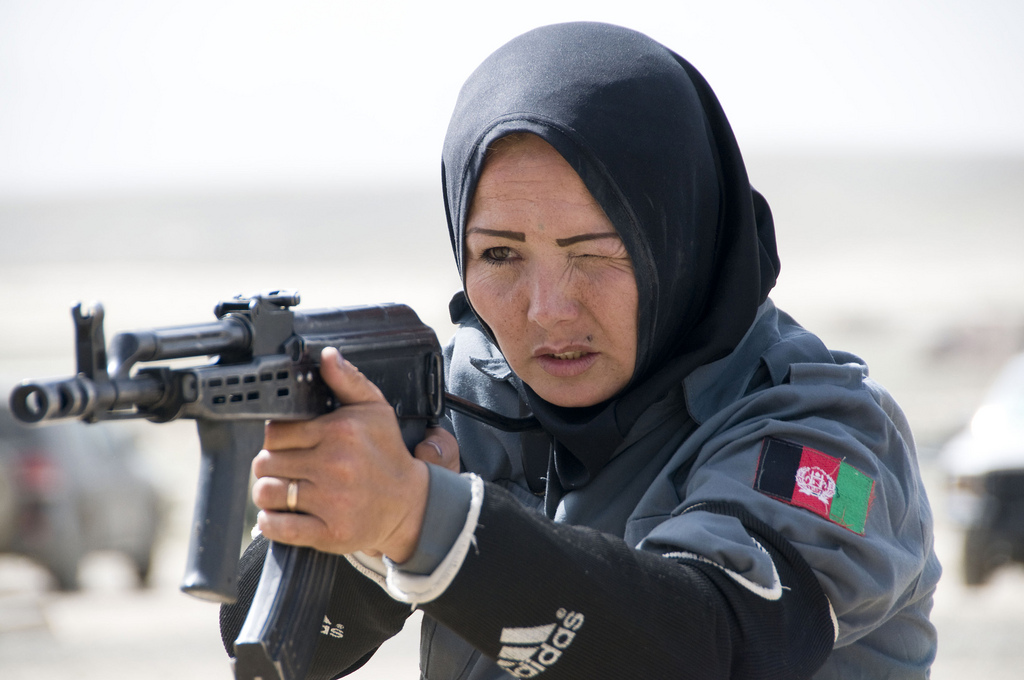
Kabul -An Afghan National Police woman qualifies on the AK-47 rifle during the tactical training program portion of the police basic training course at Kabul Military Training Center, April 13, 2010. During the eight-week course, trainees learn police-specifics such as penal and traffic codes, use of force and improvised explosive device detection. The course also covers the Afghan constitution, human rights and two weeks on weapons and tactical training. (U.S. Air Force photo by Staff Sgt. Sarah Brown/RELEASED)
